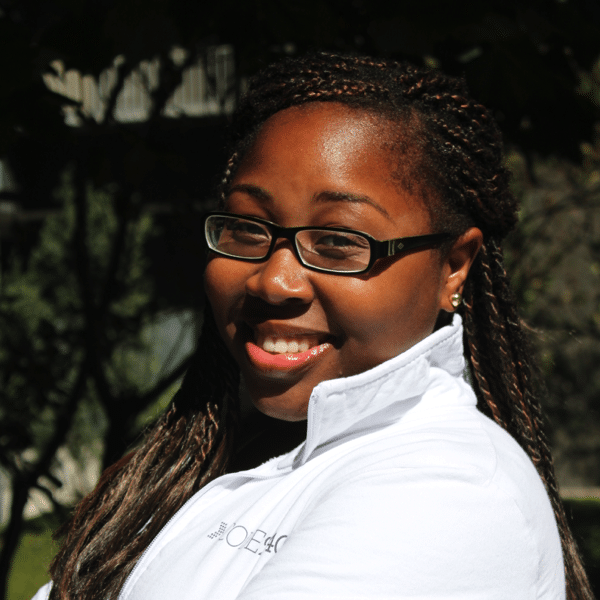Rakia Finley is the founder and CEO of Surge Assembly, a technology firm. Surge Assembly is not your average tech firm. It is a company that believes in more than just providing solutions. The goal is also to promote growth. When Finley is not spending her time running a business, she can be found working to support women in the community. She recently started an event called Pastries and Champagne, where professional women come and share the challenges and triumphs of being a woman in the male-dominated tech industry. Finley took some time out to share with Blerds what it’s like being a female CEO in the tech world.
Q: Where are you from originally?
I’m originally from Portland, Oregon. I moved to Silver Spring, Maryland, when I was 16.
Q: Where did you go for your undergraduate/graduate degrees?
I attended Hampton University, where I received my bachelor’s in sociology. I received an MBA from Howard University.
Q: How long have you been working in the technology field?
I started doing tech when I was still in undergrad. I built my first website near the end of my freshman year. My brother is a web designer, and I just thought anything my brother did I wanted to do. So I taught myself HTML, simply to just bug my brother. I learned that I really liked it a lot. I got really interested in technology, but I was very scared of changing majors. So during the summer, I took program classes at American University and received a web design certification.
Q: Essentially, you had a tech background before getting your MBA?
I did, but I didn’t know it at the time. I knew I wanted to help nonprofits use their resources to help their development. I didn’t know that tech would play a huge part in that.
Q: How did Surge Assembly start?
My business actually started in 2003, but it wasn’t until 2004 that my brother and I realized there was something here and we could make some money and pay for college. We worked with small nonprofit organizations in the Washington, D.C., metro area. I was working on a contract with a nonprofit called Break the Cycle, a domestic violence prevention organization for teens. I was implementing technology solutions into their development, such as website design and redeveloping email marketing structure. This was during a time where technology existed but everybody was scared of it, especially nonprofit organizations. It was cool to people, but when you’re trying to implement those strategies into actual organizations people are very scared.
Q: Where do you think the fear came from?
I think the fear comes from them not knowing. Whenever we went to nonprofits and told them we were going to build them a whole new website, they thought we were going to steal their intellectual property. The coolest thing at that time was downloading white papers. So the fear was their white papers could be stolen. The intellectual property then was just writing and thoughts.
Q: How did you know there was a need for the work you’re doing?
I attribute this to my mother. My brother and I were always two individuals who thought adults were doing it wrong. I carried that with me in work life. My thought was this could be done so much better. So in regard to the work I do, the need wasn’t there. I would suggest to clients the value of implementing tools, online donations portal, instant messenger, etc. It wasn’t because they needed it; they thought it was a waste of time. It was more about there being a more efficient way to do this. I love that technology allows you to do things in a more efficient manner.
Q: Choose three words to describe your professional journey and why?
Progression: We started with Microsoft Tools, Microsoft Access and Instant Messaging. We had to progress, so now we do Mobile Apps, CRM systems and more intricate technology solutions.
Education: I have never been allowed to base my experience off something I learned 10 years ago. I’m constantly learning and being open to what technology is.
Understanding: I keep saying we’re leaving people behind. Our client profile tends to be older organizations and businesses being run by older people who aren’t a part of the tech boom and don’t necessarily care about it. We as boomers or millennials have a responsibility not to leave the rest of society behind in technology.
Q: What are your thoughts on women of color in STEM fields?
I think there are amazing women in STEM, but I would love for our voices to be a little stronger, a little bigger.




